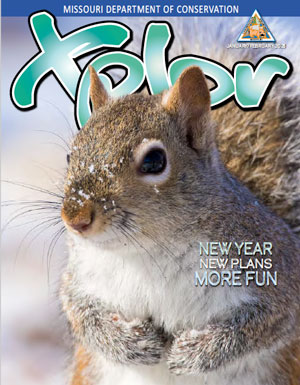On average, a snow goose goes to the bathroom every four minutes. With literally millions of snow geese in existence, these super poopers leave tons and tons of droppings.
Thirteen-lined ground squirrels spend more than half their lives hibernating. The drowsy squirrels crawl into their burrows in October, fall deeply asleep, and don’t wake up until April.
Great horned owls don’t give a hoot about cold weather. The hardy hunters start nesting in January, earlier than any other bird in Missouri. Their eggs can survive temperatures of 10 degrees below zero.
Mourning cloaks are among the first butterflies to flutter by in spring. They suck sap, which flows best when it’s warm during the day and freezing at night. It’s not uncommon to see the rugged butterflies flying when there’s still snow on the ground.
Many woodpeckers have crazy-long tongues that they use to probe inside hammered-out holes. The tongues are needle-sharp — perfect for skewering bugs — and barbed at their tips so dinner can’t wiggle off.
Some of Missouri’s oldest living trees are eastern red cedars growing in untouched corners of the state. Several are nearly 900 years old, which means they sprouted more than 600 years before the United States became a country.
Female bunnies want brawny boyfriends. To show off, eastern cottontails box and bite each other. Sometimes, one of the flop-eared fighters will leap high into the air and try to kick his opponent in the head.
This Issue's Staff
Photographer – Noppadol Paothong
Photographer – David Stonner
Designer – Marci Porter
Designer – Les Fortenberry
Art Director – Cliff White
Editor – Matt Seek
Subscriptions – Laura Scheuler
Magazine Manager – Stephanie Thurber






















